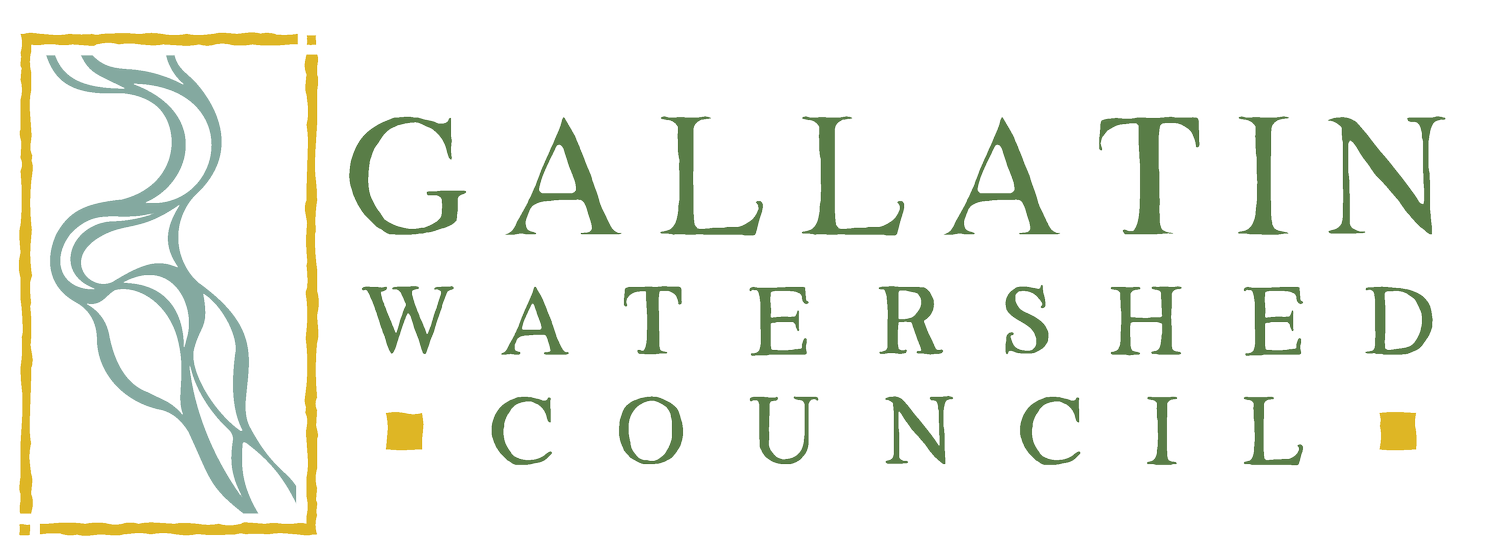Back to Our Roots: Reimagining Streams with Community Power
By: Jared Trilling, Project Manager
The Gallatin Watershed Council and our volunteers have been busy planting at our restoration sites this spring. Much of this work has been possible because of our new volunteer program, the River R.A.T.s (Restoration Action Team). This year, 45 community members committed to showing up throughout the season and were trained to plant trees, cut willow stakes, and build beaver mimicry structures. Their familiarity with these restoration techniques has helped us get more done, improve the quality of our work, and bring added leadership to planting and maintenance events. They were joined by seven businesses and organizations and many individual volunteers. Together, this dedicated group contributed over 1,000 hours of work along our streams and city parks, planting over 450 trees and shrubs and harvesting and staking 10,000 willow cuttings.
Pictured: New growth on a recently staked Black Cottonwood.
So why are we spending so much time on revegetation?
Historically, our streams looked very different from what they do now. Most of our small streams would have been full of beaver dams, creating a network of ponds and wetlands vegetated with willows and cottonwoods, lacking a defined channel as we see today. In this historic condition, water slowly made its way from the mountains down to our larger rivers, held back by the dams and sequestered by the mosaic of wetlands within the riparian corridor. This “messy” system was actually highly functional and kept streams cool, provided complex habitats for fish and wildlife, and kept nutrients and sediment in check.
Although we might not be able to fully restore our streams to their former beaver-driven condition, in many cases, planting native trees and shrubs is a powerful way to help them recover. This new vegetation helps stabilize soil, preventing erosion that can harm water quality and aquatic habitats. Shade helps keep water cool, which is vital for the health of our cold-water fish species, and well-vegetated riparian zones filter pollutants from stormwater runoff, improving overall water quality. The canopy provides vital habitat, connectivity, and food sources for various terrestrial and aquatic wildlife. If you ever find yourself along a stream shrouded by aspen and dogwood, stop and listen for a moment: you will likely hear the chatter of many bird species, a stark contrast to the silence of a grass-lined creek.
Pictured: Baxter Creek in Bronken Park.
This spring, one of our focus revegetation areas has been along Baxter Creek in Bronken Park. The stream is artificially straight, and much of it lacks a robust canopy of native species like willows and cottonwoods. To start restoring this section of stream, volunteers from our River R.A.T.s crew, Girl Get After It, and Gallatin High School honors students planted 4,000 willow stakes and 325 containerized trees and shrubs. Within the next few years, we can expect these plantings to form a dense canopy, cooling the water for fish and offering nesting sites for song birds. In the few short weeks since the plantings, we are seeing tremendous new growth, especially from our willow stakes, and we are excited to monitor this project's progress throughout the rest of the year.
Although summer heat has paused planting, our restoration work continues. This fall, we’re preparing for an exciting project: installing beaver mimicry structures in a tributary of Camp Creek. This is our chance to recreate the "messy,” healthy streams that beavers once engineered. By building these structures, we'll kickstart the return of a more natural, dynamic system. We can't wait to get started on this next phase and watch as fish, birds, and other animals begin to move back in. We hope to see you there.
Pictured (left to right): 1) Gallatin High School honors students smiling after their hard work. 2) Girl Get After It getting after it!




